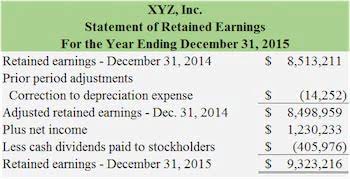
Assume that Partner A and Partner B have 50% interest each, and they agreed to admit Partner C and give him an equal share of ownership. Interests of Partner A and Partner B will be reduced from 50% each to 33.3% each. Assume that a sole proprietor agreed to admit a single equal partner for a certain amount of money. The sole proprietor, Partner A, will partnership accounting give the new partner, Partner B, an equal share in the partnership.
Double Entry Bookkeeping

The only changes that are recorded on the partnership’s books occur in the two partners’ capital accounts. The existing partner’s capital account is debited and, after being created, the new partner’s capital account is credited. If goodwill is not to be retained in the partnership, it is eliminated by a credit entry in the goodwill account. The double entry is completed with debit entries in the partners’ capital accounts. The value of each entry is calculated by sharing the value of the goodwill between the new partners in the new profit or loss sharing ratio.
- You have to divide the profit on a time basis between the periods, then apply the details given to the apportioned profits.
- This silent partner generally does not participate in the management or day-to-day operation of the partnership.
- There is no federal statute defining partnerships, but the Internal Revenue Code (Chapter 1, Subchapter K) includes detailed rules on their federal tax treatment.
- Limited partnerships are a hybrid of general partnerships and limited liability partnerships.
- This principle underscores the importance of trust and communication among partners, as the actions of one partner can bind the entire partnership.
- This structure is particularly attractive for investors who wish to participate financially without being involved in day-to-day operations.
US tax forms
Partner A owns 50% interest, Partner B owns 30% interest, and Partner C owns 20% interest. When the partner makes a cash withdrawal of moneys he received as an allowance, it is treated as a withdrawal, or drawing. There are a number of ways in which a partnership may be defined, but there are four key elements. This book uses the Creative Commons Attribution-NonCommercial-ShareAlike License and you must attribute OpenStax. Assume that Partner A and Partner B admit Partner C as a new partner, when Partner A and Partner B have capital interests $30,000 and $20,000, respectively. In the FA2 exam, all relevant information will be provided and candidates will not be expected to calculate the value of goodwill.

How Liam Passed His CPA Exams by Tweaking His Study Process
The profit or loss sharing ratio is sometimes simply called the ‘profit sharing ratio’ or ‘PSR’. Most partnership agreements have provisions for the surviving partners to continue operating the partnership. Typically, a valuation is performed at the date of death, and the remaining partners settle with the deceased partner’s estate either directly with cash or through distribution of the partnership’s assets. When the new partner’s investment may be less than his or her capital credit, a bonus to the new partner may be considered. Sometimes the partnership is more interested in the skills the new partner possesses than in any assets brought to the business. For instance, the new partner may have expertise in a particular field that would be beneficial to the partnership, or the new partner may be famous and can draw attention to the partnership as a result.
Understanding Gross Revenue: Key Concepts and Business Impact
- This guide aims to provide a comprehensive overview of essential partnership accounting practices, offering valuable insights for both new and experienced accountants.
- This involves settling all outstanding obligations, including paying off debts and distributing any remaining assets among the partners.
- Unlike corporations, partnerships involve multiple individuals who share ownership, profits, and responsibilities, making the accounting practices more complex.
- Another point to remember is that the ‘appropriation account’ is an additional accounting statement that is required for a partnership.
- If instead the new partner invests directly into the partnership, the change increases the assets of the partnership as well as the capital accounts.
- The next step involves settling the partnership’s affairs, which includes liquidating assets, paying off liabilities, and distributing any remaining assets among the partners.
- When a new partner is admitted, it often brings fresh capital, new skills, and additional resources to the partnership.
Understanding these practices is crucial for ensuring accurate financial reporting and compliance with legal requirements. This guide aims to provide a comprehensive overview of essential partnership accounting practices, offering valuable insights for both new and experienced accountants. It is worth pointing out that when a question states the Certified Public Accountant profit or loss sharing ratio, that the proportions are always applied to the residual profit – not the profit for the year.


To allocate the https://www.bookstime.com/ $10,000 bonus that each of the old partners will contribute to the new partner, Remi, make the following calculations. This table illustrates realignment of ownership interests before and after admitting the new partner. The three partners may choose equal proportion reduction instead of equal percentage reduction.
